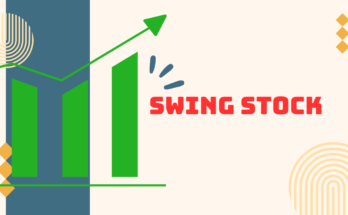Introduction:
A capitalization-weighted index is what? This article is for you if you want to learn how to calculate a capitalization-weighted index. Take a look at this article. Without a doubt, you will get a lot from this.
What Is a Capitalization-Weighted Index?
A capitalization-weighted index is a stock market index that measures the performance of a group of stocks in proportion to their total market capitalization, which is the total value of all outstanding shares of a company’s stock.
In a capitalization-weighted index, companies with larger market capitalizations have a greater impact on the index’s performance than smaller companies. This means that the performance of the index is more heavily influenced by the largest companies in the index. The S&P 500 Index is an example of a capitalization-weighted index.
Capitalization-weighted indexes are often used in the financial industry because they are considered to be more representative of the overall market than other types of indexes. They are also seen as more stable and less volatile than other types of indexes because they are less affected by the fluctuations of smaller companies.
However, some critics argue that capitalization-weighted indexes may not always be the best measure of the market, as they can be overly influenced by a few large companies.
Additionally, some investors prefer alternative weighting methods, such as equal-weighted or fundamental-weighted indexes, which give more weight to smaller or value stocks.
Calculation of a Capitalization-Weighted Index:
The calculation of a capitalization-weighted index involves three main steps:
1. Select the stocks to be included in the index: The first step is to select the stocks that will be included in the index. This can be done using various criteria, such as market capitalization, liquidity, industry sector, or other factors.
2. Calculate the market capitalization of each stock: The market capitalization of a stock is calculated by multiplying the number of outstanding shares by the current market price of each share.
3. Calculate the index value: The index value is calculated by adding up the market capitalization of all the stocks in the index and dividing it by a divisor. The divisor is a number that is used to adjust the index value for changes such as stock splits, stock dividends, and other corporate actions.
The formula for calculating a capitalization-weighted index is as follows:
Market Capitalization-Weighted Index = Σ (Price of Stock x Number of Outstanding Shares) / Total Index Market Capitalization
In other words, the calculation involves adding up the market capitalizations of all the companies in the index and dividing by a scaling factor that represents the total market capitalization of the index.
The scaling factor ensures that the index reflects the relative market capitalization of each company. The resulting number is the index level.
For example, let’s say an index has three companies with the following characteristics:
Company A: 1 million outstanding shares, trading at $50 per share
Company B: 500,000 outstanding shares, trading at $100 per share
Company C: 2 million outstanding shares, trading at $25 per share
To calculate the index level of this capitalization-weighted index, we would first calculate the total market capitalization of all three companies:
Company A market cap = 1 million shares x $50 per share = $50 million
Company B market cap = 500,000 shares x $100 per share = $50 million
Company C market cap = 2 million shares x $25 per share = $50 million
Total market cap = ($50 +$50 +$50 )
Total market cap = $150 million
Next, we would calculate the weighting of each company within the index by dividing its market capitalization by the total market capitalization:
Company A weighting = $50 million / $150 million = 33.33%
Company B weighting = $50 million / $150 million = 33.33%
Company C weighting = $50 million / $150 million = 33.33%
Finally, we would calculate the index level by adding up the weighted price of each stock:
Index level = (33.33% x $50) + (33.33% x $100) + (33.33% x $25) = $58.33
Therefore, the index level for this example capitalization-weighted index would be $58.33.
Advantages of a Capitalization-Weighted Index:
The advantage of a capitalization-weighted index is that it provides a more accurate representation of the overall market because it gives more weight to companies with larger market capitalizations, which are typically the most established and stable companies.
This can reduce the impact of smaller, less significant companies on the index and provide a more stable benchmark for investors.
Additionally, because capitalization-weighted indexes are passive in nature, they tend to have lower management fees and expenses compared to actively managed funds, making them the most affordable investment option for most investors.
The disadvantage of a Capitalization-Weighted Index:
The disadvantage of a capitalization-weighted index is that it can be heavily influenced by a small number of large companies.
This means that if one of those companies experiences a significant drop in stock price, it can have a significant impact on the overall performance of the index.
Additionally, capitalization-weighted indexes may not necessarily reflect changes in market sentiment or investor preferences, as they are driven solely by market capitalization.
Investors looking to invest in specific sectors or industries may not find a capitalization-weighted index suitable as these indexes may have a significant weightage towards particular sectors or industries that might not align with their investment goals.
Disclaimer: The financial and crypto market information provided on Blogbia is intended for informational purposes only and should not be construed as investment advice. It is highly recommended that you conduct your own research and seek guidance from financial experts before making any investment decisions. The decision to continue reading the content on this website is entirely at your own discretion, and it shall be understood as an express acknowledgment and agreement that Blogbia shall be released from any potential legal action or enforceable claims that may arise.




2 Comments on “Capitalization-Weighted Index and Calculation of a Capitalization-Weighted Index?”